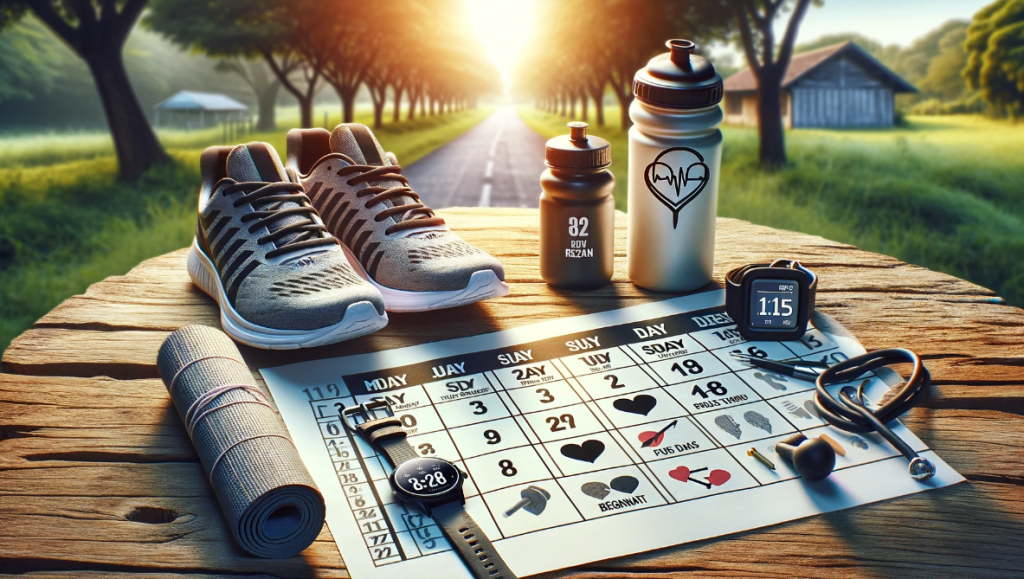Mastering Marathon Preparation: A Comprehensive Guide

Marathon running is a test of endurance, determination, and physical prowess. Preparing for a marathon is not just about running longer distances but also about understanding your body, setting realistic goals, and following a structured plan. This article delves into the essential steps to prepare for a marathon, ensuring you are well-equipped to cross that finish line.
Setting the Right Mindset
Before diving into the physical aspects of marathon preparation, it’s crucial to address the mental component. Setting the right mindset can be the difference between completing the marathon and giving up midway.
- Understanding Your Why: Knowing why you want to run a marathon can be a powerful motivator. It could be for personal achievement, charity, or even a bucket list item.
- Building Habits: According to Charles Duhigg, author of “The Power of Habit,” establishing consistent cues and rewards can help solidify your running routine. For instance, running at the same time daily can create neural pathways, making the activity habitual.
- Seeking Support: Engaging with a community, like joining a local running club or participating in park runs, can provide encouragement and camaraderie.
- Visualizing Success: Imagine yourself crossing the finish line. This visualization can serve as a constant reminder of your goal and keep you motivated.
A strong mental foundation is as crucial as physical training. By understanding your motivations, building habits, seeking support, and visualizing your success, you’re setting yourself up for a successful marathon experience.
Starting with the Basics: Walking
Before you begin running, it’s essential to establish a foundation. Walking serves as an excellent precursor to running, preparing your body for the increased physical demands ahead.
- The Walking Plan: Start with a 15-minute brisk walk and gradually increase your duration to 60 minutes. This plan is especially beneficial for absolute beginners, allowing muscles and tendons to adapt without the risk of injury.
- Consistency is Key: Aim for regular walking sessions, ensuring you’re not just strolling but maintaining a pace that’s faster than a leisurely walk yet slower than a race walk.
- Flexibility: If time constraints arise, consider splitting your walking sessions into shorter durations throughout the day.
Walking is a low-impact way to introduce your body to the world of endurance sports. It lays the groundwork for the more intensive training that follows.
Transitioning to Running
Once you’ve established a walking routine, it’s time to introduce running into the mix. This transition should be gradual to prevent injuries.
- The Run-Walk Plan: Over seven weeks, start by walking for 30 minutes and gradually introduce running intervals. By the end of this period, you should be running twice as long as you walk.
- Pace Yourself: Initially, focus on building endurance rather than speed. Find a comfortable pace that you can maintain without feeling overly exhausted.
- Listen to Your Body: If you feel any discomfort or pain, it’s essential to rest and recover. Pushing through pain can lead to severe injuries.
Transitioning to running requires patience and attentiveness to your body’s signals. By gradually increasing your running intervals, you’ll build endurance and set the stage for continuous running.
Nutrition and Hydration: Fueling Your Marathon Journey
As you intensify your training, your body’s nutritional and hydration needs also evolve. Proper nutrition and hydration are paramount for optimal performance and recovery. This section will provide a guide on what to consume before, during, and after your runs.
Table: Marathon Nutrition and Hydration Guide
| Timing | Nutrition | Hydration |
|---|---|---|
| Before Run (2-3 hours prior) | Complex carbohydrates (e.g., oatmeal, whole grain bread)Lean protein (e.g., chicken, tofu)Avoid fatty and spicy foods | Drink 500ml of water |
| During Run (Every 30-45 minutes) | Energy gels or chews Bananas or raisins | Sip on a sports drink with electrolytes |
| After Run (Within 30 minutes) | Protein-rich foods (e.g., yogurt, protein shake) Carbohydrates to replenish glycogen stores (e.g., rice, pasta) | Drink at least 500ml of water, more if you’ve sweated excessively |
Proper nutrition and hydration can significantly impact your training outcomes. Consuming the right nutrients at the right times ensures that your body has the energy to perform and the resources to recover. Always listen to your body and adjust based on how you feel during and after your runs.
Building Endurance: From 5K to Marathon
After mastering the run-walk method, the next goal is to increase your running distance, starting with a 5K and eventually working up to a marathon.
- Structured Plans: Follow a structured plan that gradually increases your running distance. For instance, after achieving a non-stop 5K, you can aim for a 10K, then a half marathon, and finally a full marathon.
- Strength and Flexibility Training: Incorporate strength training exercises and flexibility routines like yoga to enhance muscle strength and reduce the risk of injuries.
- Rest and Recovery: Ensure you have rest days in your training schedule. These are crucial for muscle recovery and overall well-being.
Building endurance is a gradual process. With a structured plan, strength training, and adequate rest, you’ll be well on your way to completing a marathon.
All in all, marathon preparation is a journey that tests both your physical and mental limits. By setting the right mindset, starting with foundational exercises like walking, transitioning to running, and building endurance, you can confidently approach the marathon starting line. Remember, the journey is as rewarding as the destination. Embrace each step, celebrate small victories, and keep pushing forward.


